Normally I avoid traveling in Europe in the summer; on one hand, because there are too many tourists and on the other hand, because it is quite nice at that time where I live. However, a good friend of many years was going to be in Croatia and asked if we could meet there.
The trip started off badly: the local train to the main station where I live was canceled, so I hurried to a streetcar stop only to see it leaving the station when I was close, just was able to get the airport bus, but then learned that the flight was delayed (fortunately for only ½ hour). However, when a trip starts off badly, it usually turns out to be great, which was also the case this time.
Croatia is in the European Union, but not in the Schengen area, so passports and not just ID cards are required for travel there. A French family at the boarding gate learned this the hard way when they were denied boarding, since at least one of their three kids did not have a passport. They were all prepared for a nice vacation and had probably booked a hotel at their destination. The children were crying and the father was totally depressed and dejected, cursing at himself. It was quite a sad scene.
Face masks were not required on the plane, and I was only one of about five people wearing one. I certainly did not want to risk a Covid infection at the start of my trip. In addition, the flight was only 1 ½ hours, so not a big deal to wear one.
I arrived at 9:30 in the evening, and the information desk said the bus to Split would cost six euros. The bus driver demanded seven, but I certainly did not want to have to wait for the next bus so paid up. The maps app on my cellphone directed me to the apartment my friend had rented, and then we went back down to the harbor for a delicious meal of ćevapčići.
The next morning, we walked up Marjan Hill at an elevation of 178 m, from where there is a great view of the city.

Church of St. Nicholas on Marjan hill

Back down along the waterfront


Of course, a walk around the Diocletian’s Palace is a must, although it is not actually a palace and covers a large part of the old town. It is packed with restaurants and residences in addition to the Cathedral of Saint Domnius.
The Silver Gate



Golden Gate

Toward the central square with the cathedral in the background

Quote from Wikipedia:
“The Cathedral of Saint Dominicus, consecrated at the turn of the 7th century AD, is regarded as the oldest Catholic cathedral in the world that remains in use in its original structure, without near-complete renovation at a later date (though the bell tower dates from the 12th century). The structure itself, built in AD 305 as the Mausoleum of Diocletian, is the second oldest structure used by any Christian Cathedral.”
Inside


View from the bell tower



In and around the palace




The main beach, which did not suffer for lack of people. A quick dip was mandatory after a hard day of sightseeing.
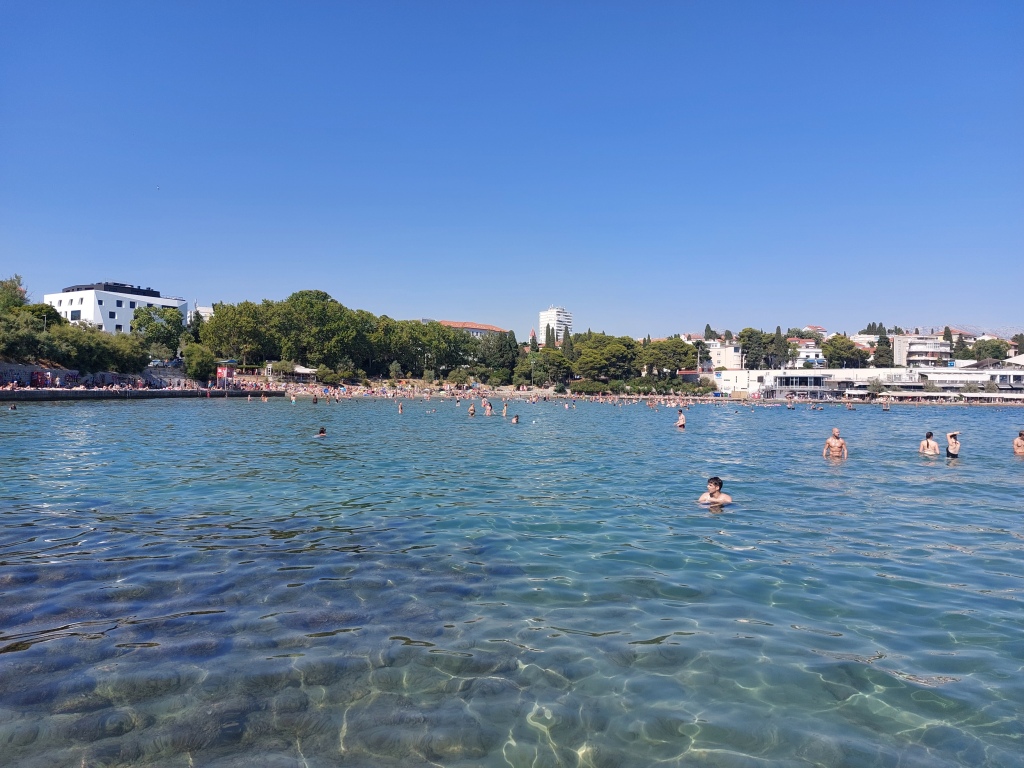
We took the short ferry ride to Hvar on the third day where the friendly owner of our accommodation Bruno was waiting for us. First down to a seaside restaurant for a bite to eat and a great view of the harbor.

Promenade



The main square, where it was forbidden to go in swimwear with a fine of approx. 90 euros for transgressions. The same applied to drinking alcohol that you brought yourself there. Quite good regulations to keep the place from becoming something similar to Mallorca with its rowdy, inebriated crowd.


Picturesque alleys
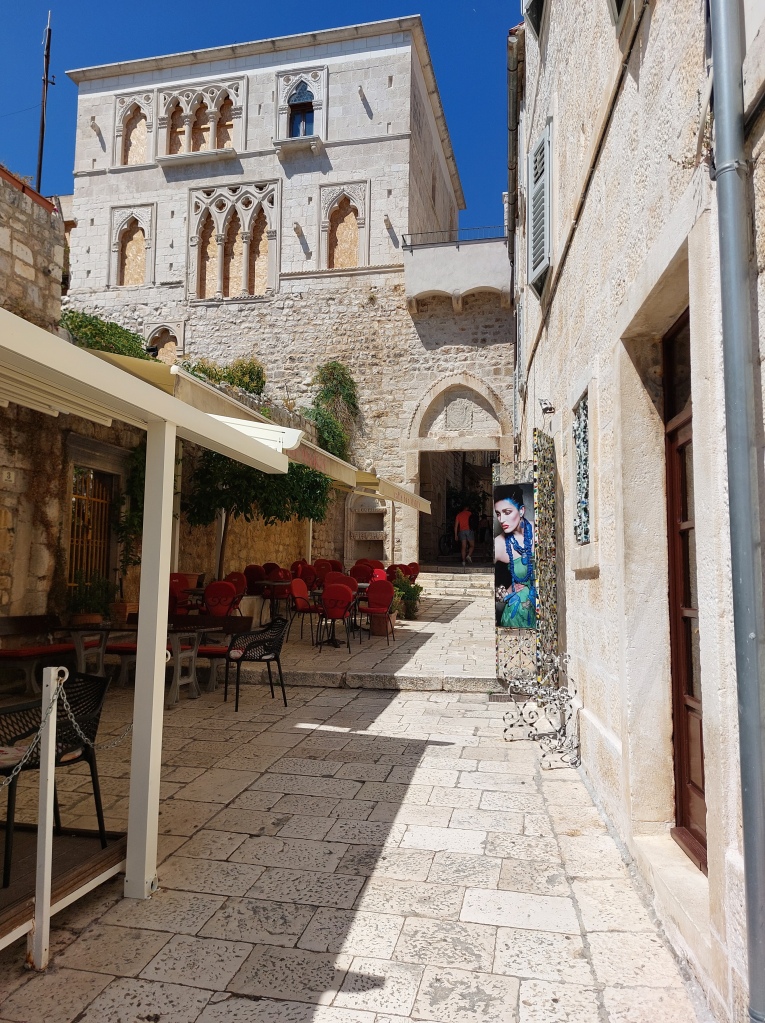
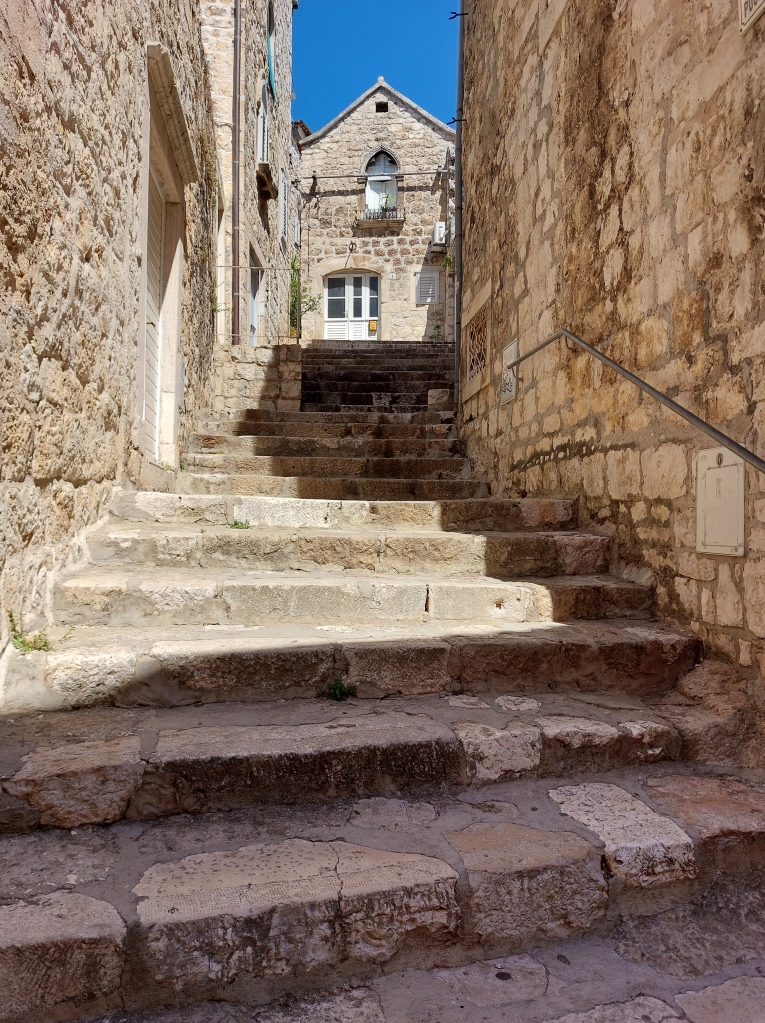




Walk down to a nice beach
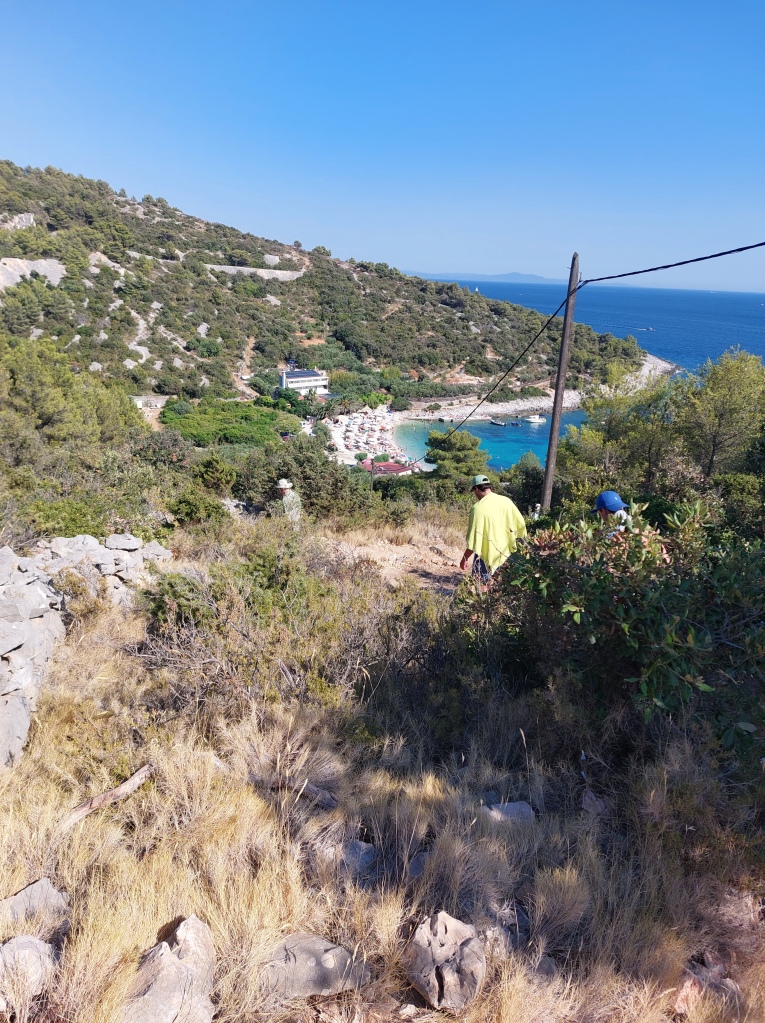
My friend Scott ready to test the waters

In the evening with the illuminated fortress at the top

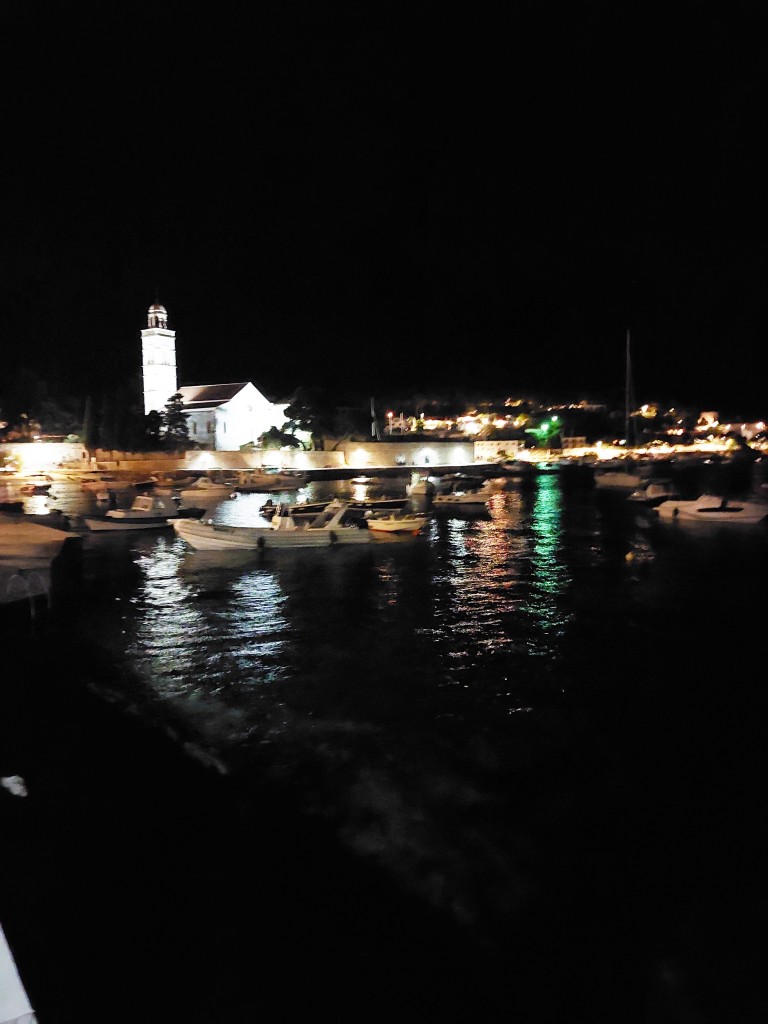

We arranged for a kayak tour the next day, which began in a smaller bay

Piero, our guide




Our first stop was at a beach on a small island populated by a few nude, foreign tourists there for the day (sorry, no pictures of them).
Snorkeling did not result in seeing any spectacular fish.



At least I could see where to avoid the sea urchins.

Kayaking then continued and we paddled around another island to reach a larger bay with plenty of boats.

Heading up to the fortress

The fortress was built in the 16th century and is sometimes referred to as Spanjola, since it was built was Spanish laborers. It provided protection against marauding pirates saved the lives of the townspeople when they found shelter there against invading Turks who plundered the town and set it on fire.
Views from the fortress

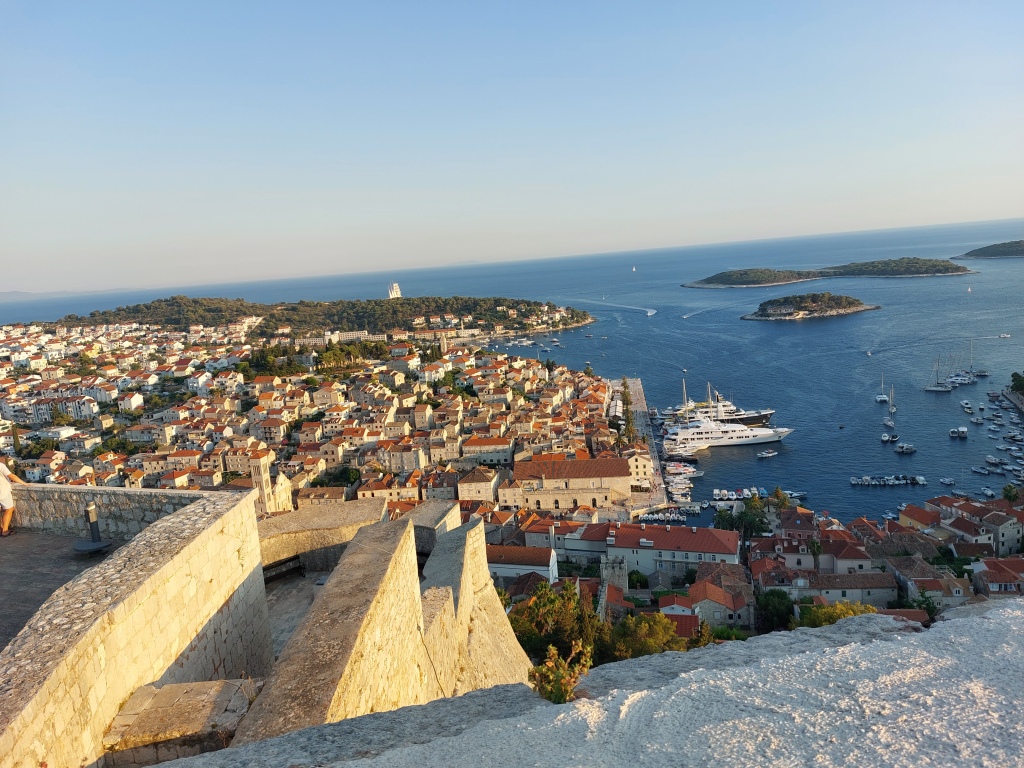
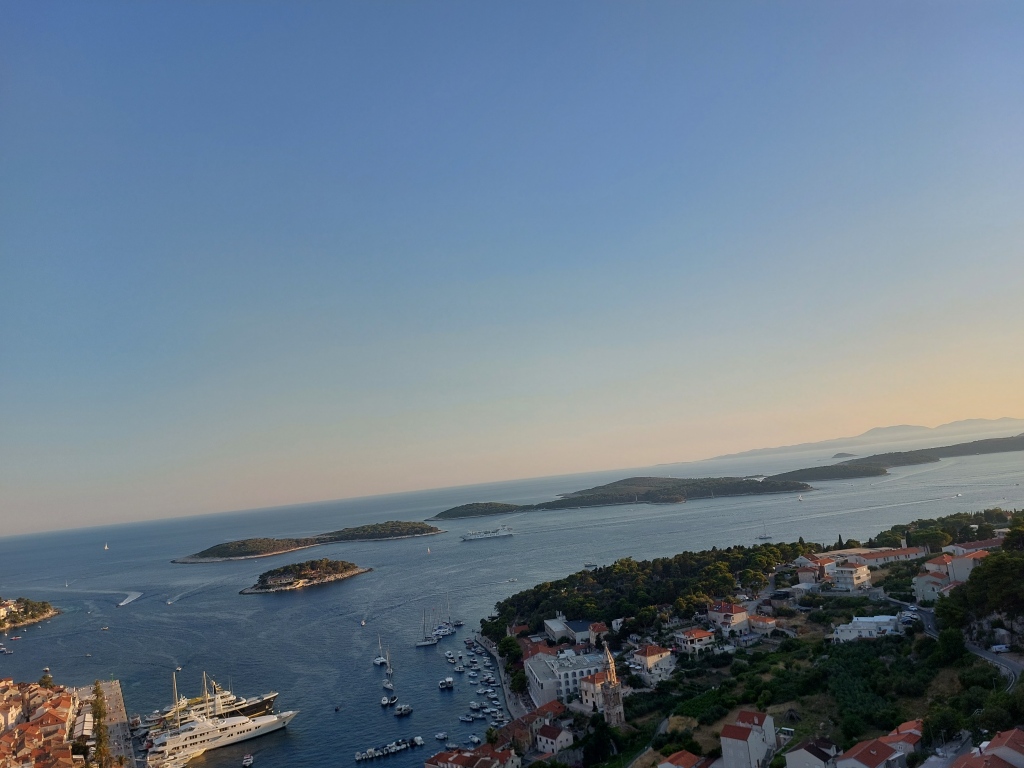




The fortress prison: just looking at the cells made me shudder to think of the poor souls who had been incarcerated there.



An aperitivo before dinner was a ritual that I didn’t want to miss. There were a few drinks that I had not heard of previously.

Another great meal! Lots of delicious fish, meat and pasta dishes.

Evening ambiance


After two wonderful days, Bruno drove us to the bus station and we traveled to Jelsa on the north coast of Hvar.
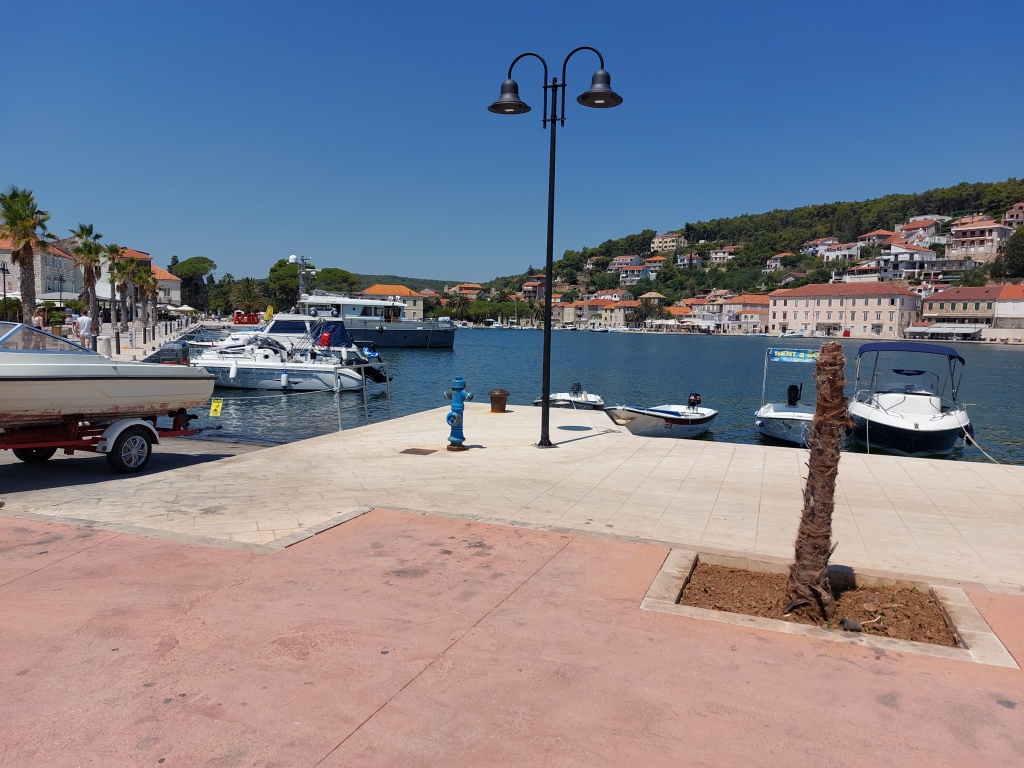



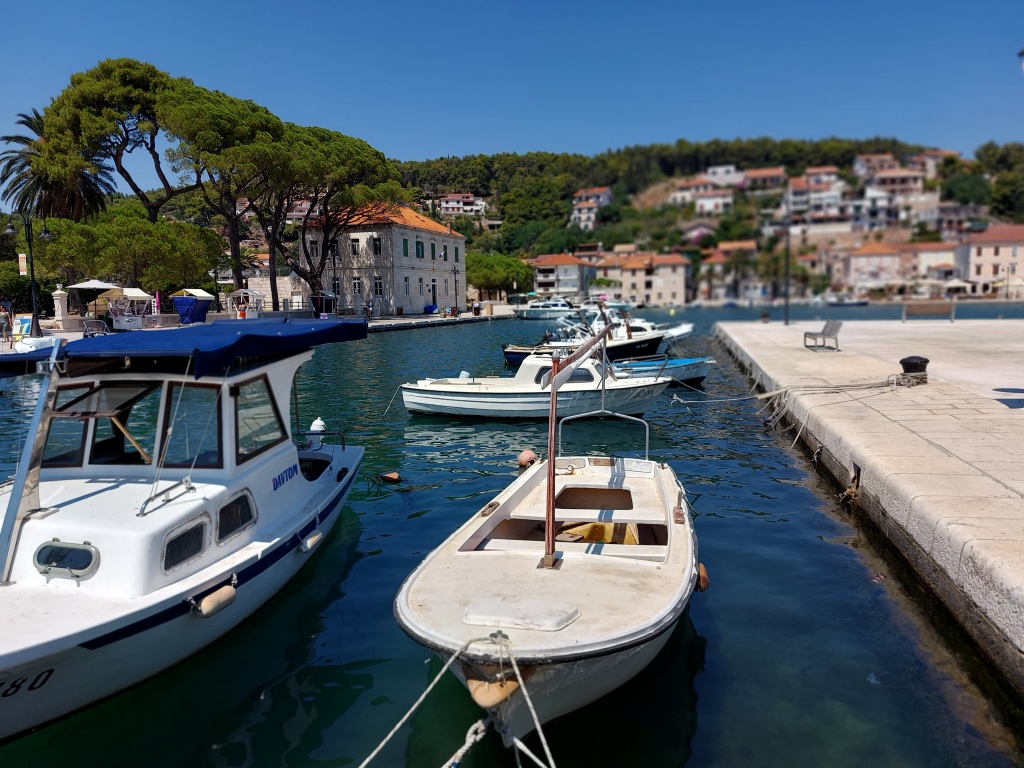

Jelsa was really laid-back, a nice break from the hordes of tourists in Hvar. It seemed like we were the only foreigners there, the rest of people Croatian families on vacation. If we had known how nice it was, we would have arranged to stay more than one night.
Local swimming spot

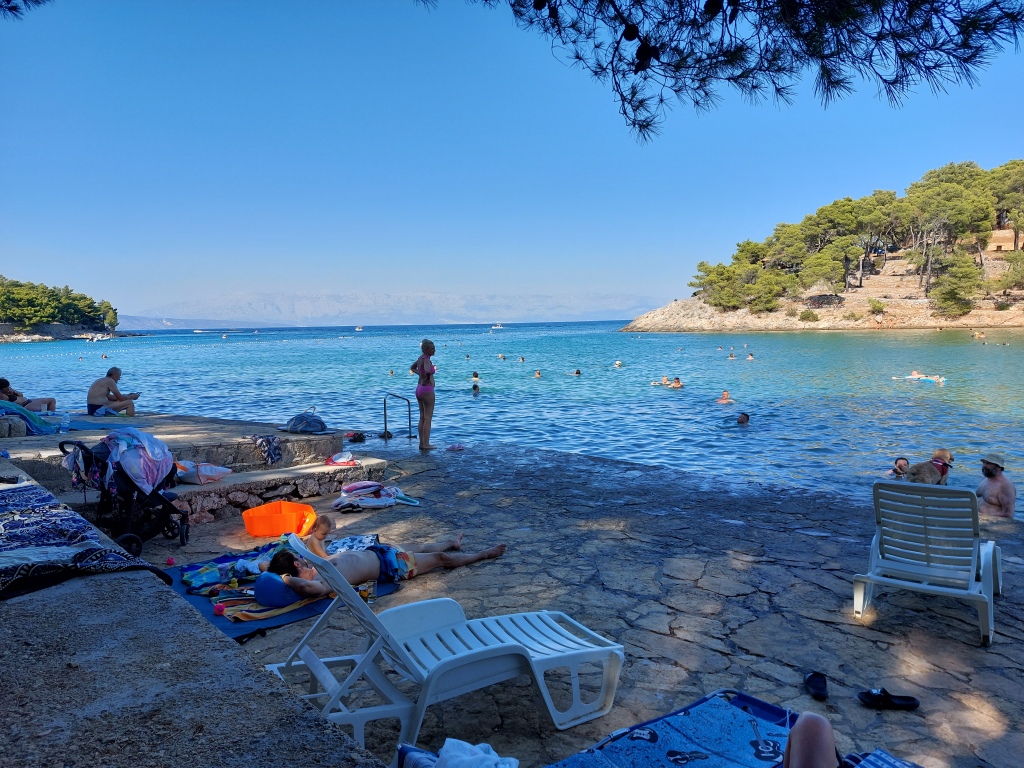
Evening


Morning, on the way to the next boat

The boat to Bol on Brač Island.

Bol, the oldest coastal settlement on the island dating back to the 12th century.
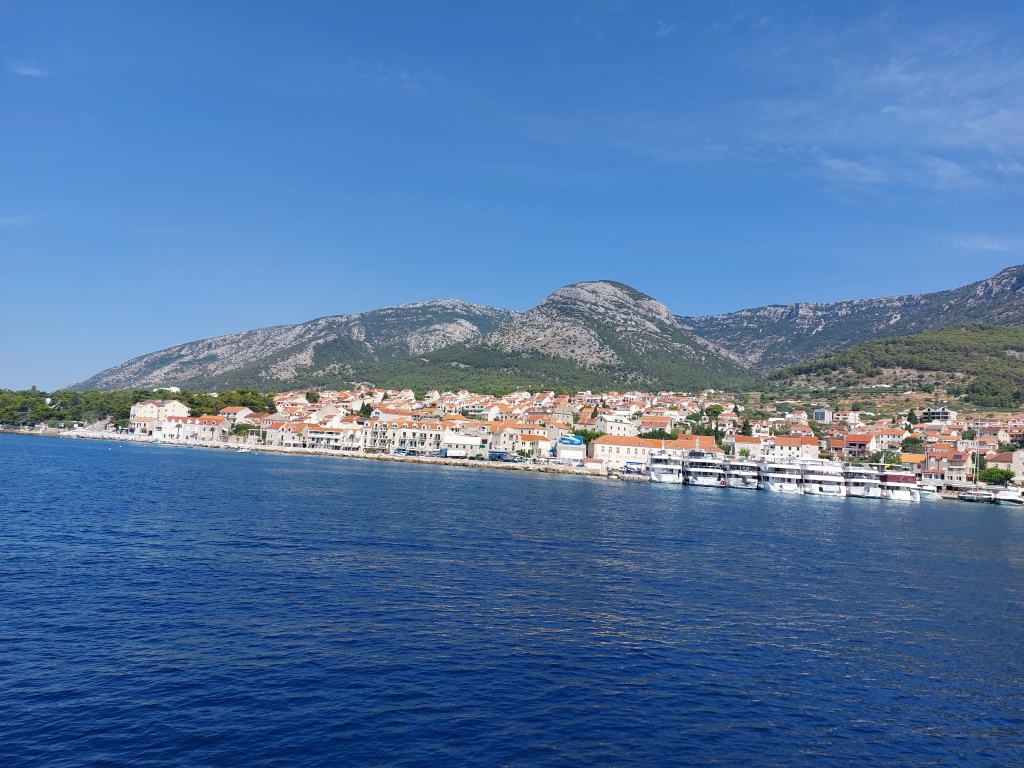

We had a nice apartment facing the water, the only problem being the party sailboats parked there at night, on which quite a bit of boisterous noise was emitted. My guide book had maintained that lots of agencies offered combination boat ride/swimming and hiking tours to Blaca Hermitage, but the owner of our accommodation informed us that they only went once a week on Wednesday. She had apparently never been there and said it would be very difficult to find and that we would need a GPS.
We were about to inquire at the tourism information office when a local guy asked us where we wanted to go and then immediately offered to drive us to a place from where we could hike there. The price was a bit steep, but Scott really loves hiking and immediately said yes.
Our driver/guide Miroslav was from the island and gave us a lot of information about it. His great-grandfather had emigrated to Chile as apparently many on the island had, earned a small fortune there and then went to San Francisco for a while before returning to the island.
It was about a one-hour hike down to the hermitage/monastery. I would have needed a drone to take a good picture of the complex, but here is poor quality one taken of the entrance ticket.

The hike down was pleasant despite the heat (temperatures rose to approx. 36° C every day during our stay).



Arrived



It was not permitted to take pictures inside, but we were guided through the different rooms with many old books and paintings. There was even a grand piano that had been lugged up the mountain. The monastery had been very rich producing a log of wine and honey in addition to the meat from many sheep. Thirty peasants had lived and worked there, receiving only food and lodging in return. The priests transported the products to larger cities, not selling them but bartering them for books, painting, the piano, a large telescope (one of the priests was an amateur astronomist) and whatever else they needed.
The last priest died in 1963 and monastery life ended with that. Now it is a museum.
Our guide Miroslav then took us to Vinarska Zadruga, a winery at the harbor.

He was a regular there, and we were immediately served a fine bottle of local white wine.
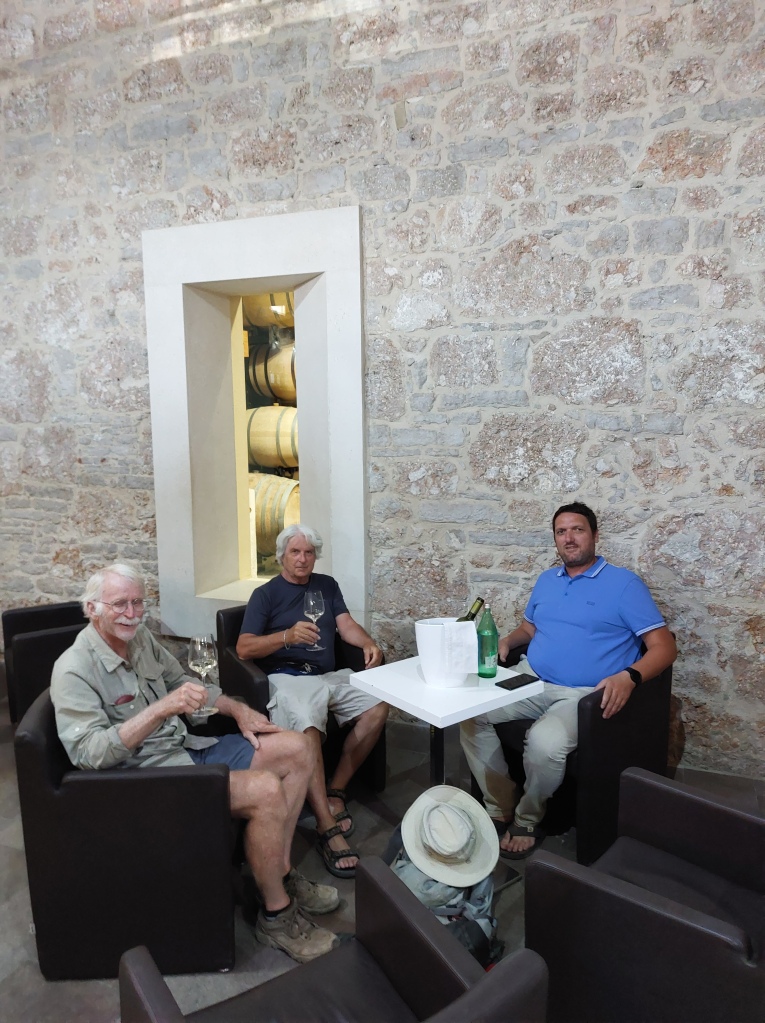
Even the birds like the wine!

We were told it was on the house, since Miroslav knew everyone there. Then he took us to a restaurant he owned where they had had a big fish barbecue at noon. A lot of fish was left over, so they warmed it up and served us a delicious meal. Miroslav ordered a bottle of wine and then another one, the other things we had to pay for. Needless to say, we were quite exhausted from the hike and wine and went to bed early. Miroslav called us around 11 p.m. to ask if we would join him at the wine bar again, but we were too tired and went back to sleep.
The next morning we walked to the beach that Bol is famous for, Zlatni Rat. Miroslav had warned us to be there before 11 a.m. and then only after 5 p.m. again, since it gets quite crowded.


Again, I would have needed a drone to get a good picture of it, so here is one depicting it on a billboard in town:

Aperitivo time: the alcohol content in the drink was very low, but I liked the name.


Then a bus ride to Supetar on the north side of the island. Scott had reserved a very nice apartment with a great view, but the appliances were so modern that we could not figure out how to use the stove or microwave.

In town

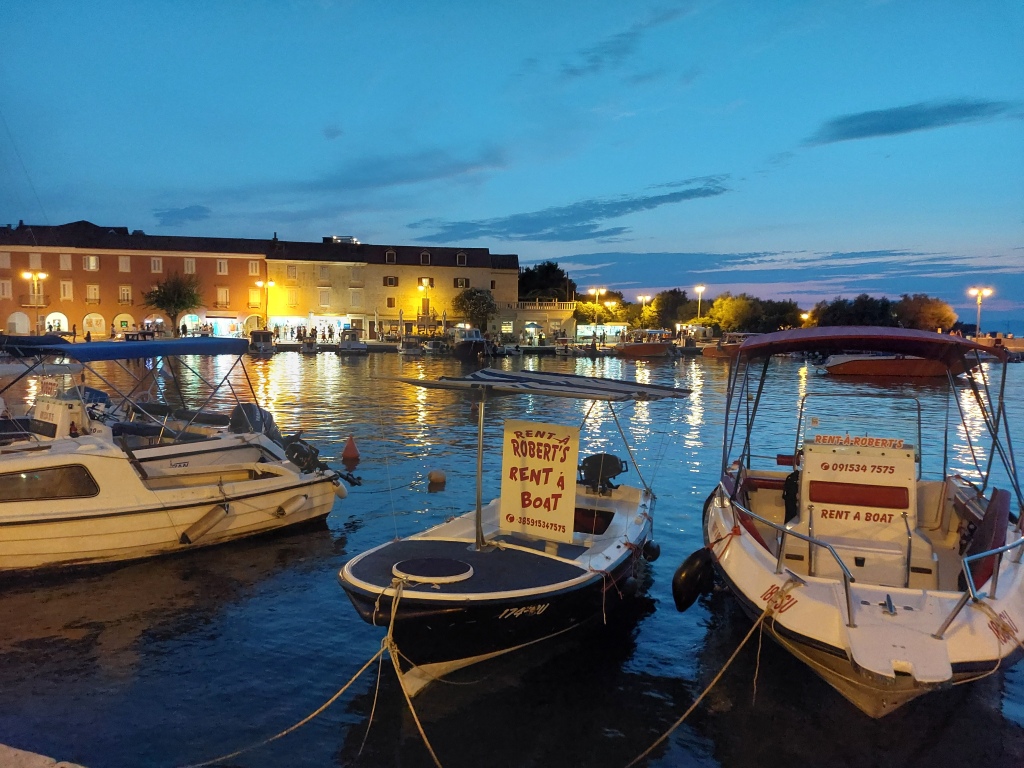

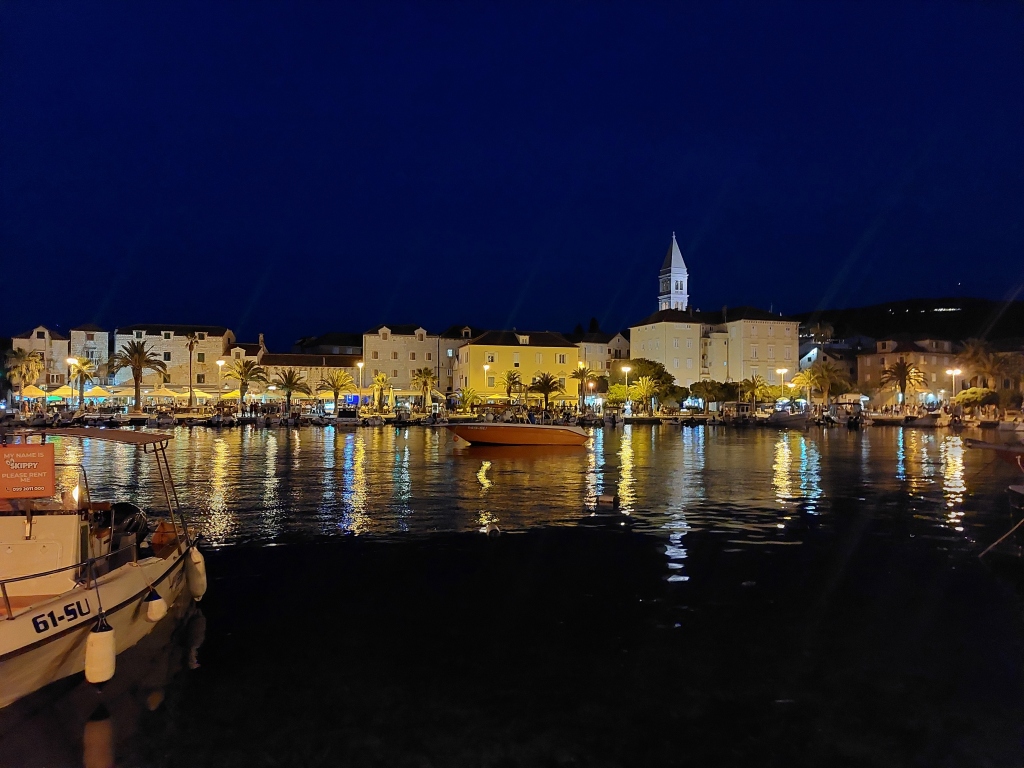

We wanted to take the short hike on the Olive Trail three kilometers to the east from the village of Mirca, but we didn’t find the trail until we were at the end of it and then one sign for it.

Supetar’s cemetery is especially known for Petrinovic family mausoleum

Petrinovic had emigrated to Chile in the 19th century, as had many from the island, and had become quite rich there.
There was a thunderstorm our last evening there, the only time it rained but which did not last very long.

Then another ferry back to Split

Some more good food, including somun, a wood-fired yeast bread, fish carpaccio with caper berries, barbecued white fish, and – of course – chilled white wine. Our trip was over all too soon, but I will have to go back sometime in the spring or fall when there are fewer tourists and it is not that hot.
And of course a few souvenirs:


My trip to include Croatia was cancelled due to the pandemic in 2020 looking to go in 2023. Was scheduled to stop in Croatia while on a cruise in 2018 we didn’t because of bad weather then came 2020 by land tour that didn’t happen. Hopefully next year I will visit besides Montenegro n Slovenia.
LikeLiked by 1 person
Slovenia is supposed to be beautiful: enjoy! But be sure to put Croatia on your bucket list.
LikeLike
I’ve never been to Croatia, but this might make me want to go even in the summer. 🙂 Maggie
LikeLiked by 1 person
And there is a lot more that we didn’t see
LikeLike